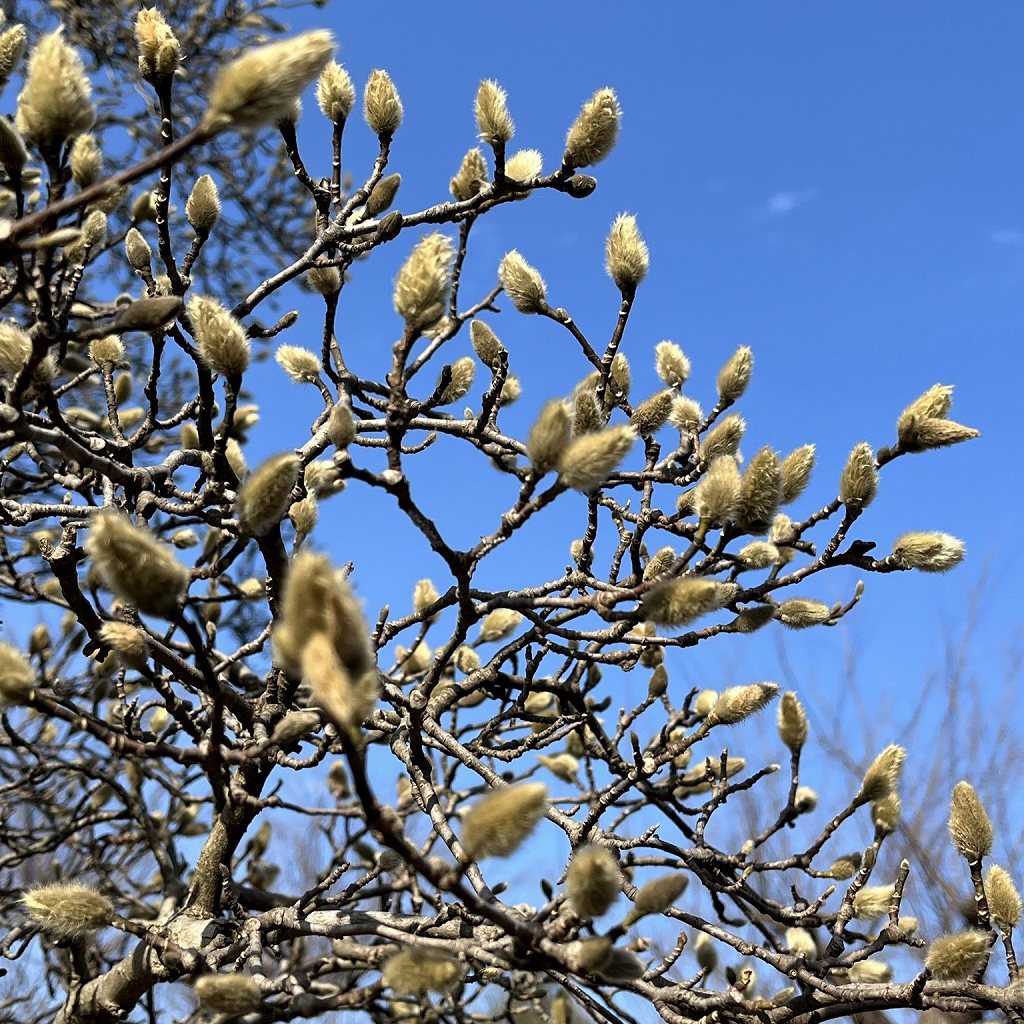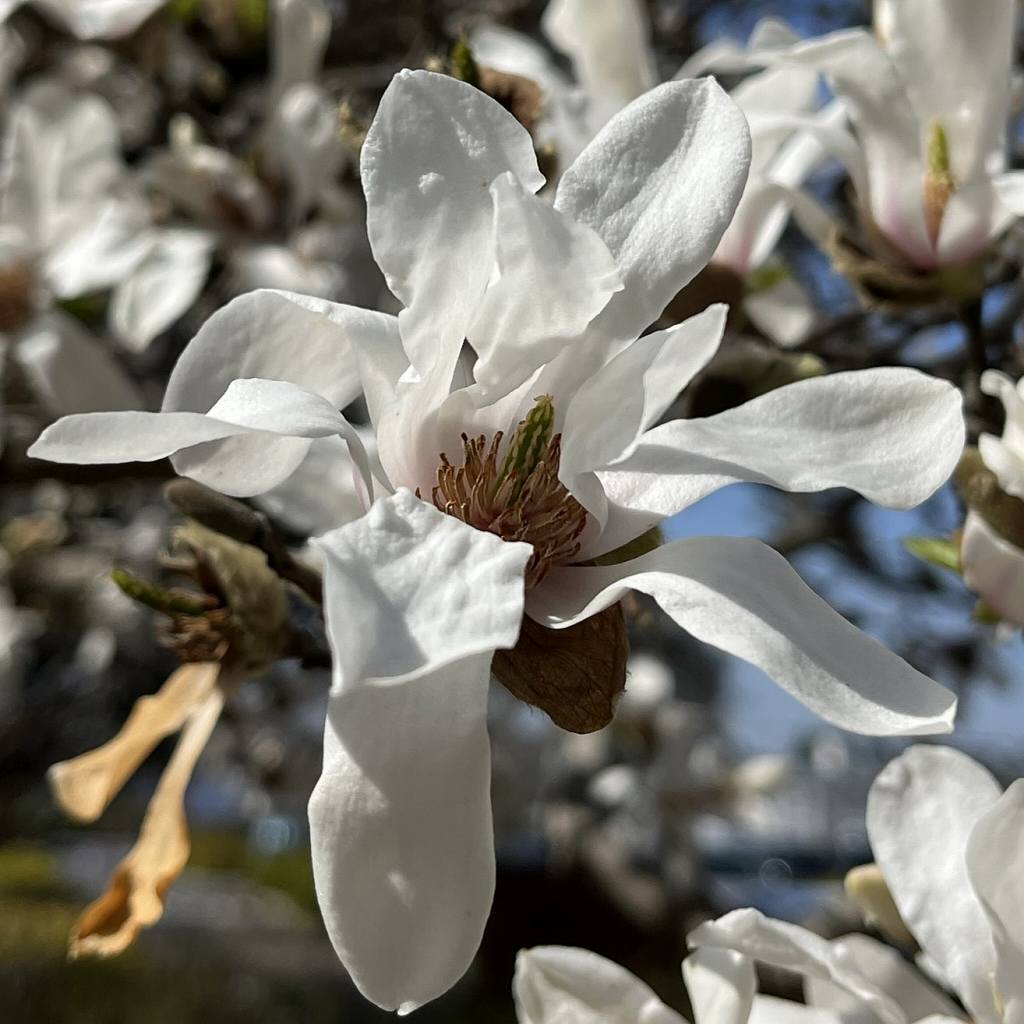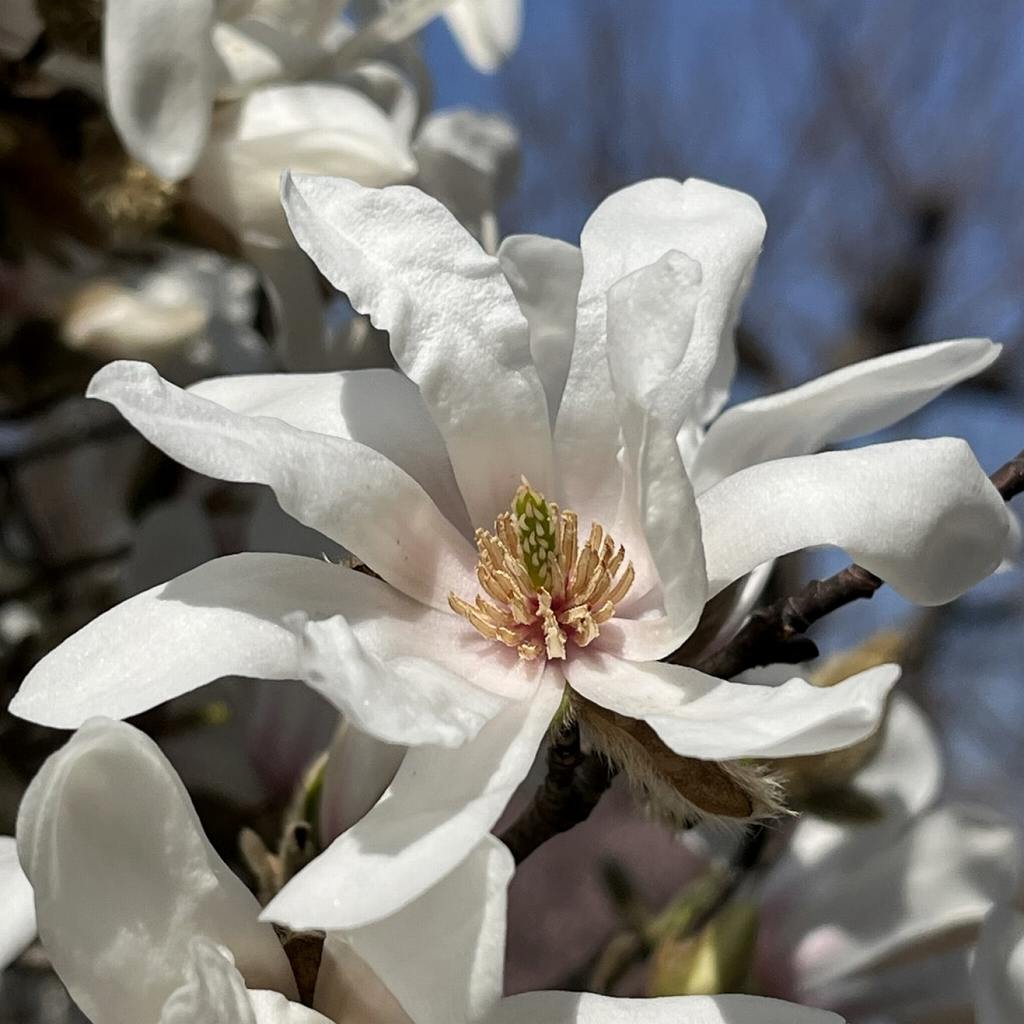コブシの名前の由来は「にぎり拳」。ふっくらとした銀白色の蕾をつけ、華奢な白色の花を咲かせ、ゴツゴツとした赤色の集合果を結びます。
Japanese name of Kobushi Magnolia means “fist”. It has plump silvery-white buds, delicate white flowers, and bears clumps of rugged red fruit.
【仮名】コブシ
【和名】辛夷
【英名】Kobushi Magnolia, Kobus Magnolia
【学名】Magnolia kobus
【誕生】02/ 20, 02/ 23, 03/ 08, 03/ 24
【開花】03, 04月
【花色】White






コブシ
コブシの来歴
コブシはモクレン科の落葉高木です。日本では北海道から九州まで、国外では韓国の済州島に分布し、山地に自生する一方、庭園や公園に植栽。昔から開花が農事の目安にされ、「田打ち桜」「田植え桜」「種まき桜」などの別名があります。花言葉は「愛らしさ」「友情」「信頼」。
コブシの名前
コブシの名前の由来は諸説あり、ふっくらとした蕾が子どもの小さな握り拳のようだから、拳の指が開くように花が咲くから、ゴツゴツとした実の形が拳に似ているから。この和名がそのまま英名やラテン語の種小名「コブス」になりました。漢字の「辛夷」は中国で「木蓮」のこと。
コブシの姿形
コブシの枝は樹皮が滑らかな灰白色で、樹齢を重ねると浅く裂け目が入ります。花芽は銀白色の軟毛に覆われた長卵形。花は華奢な花弁6枚が萼片3枚とともに開き、下に小さな葉を1枚つけます。葉は倒卵形で互生。花後の集合果は熟すと裂け、赤色の種子を白色の糸で垂らします。
コブシの近縁
コブシの近縁「北辛夷」は北海道と本州東部の日本海側に分布し、葉と花が少し大きめです。「四手辛夷」は樹全体が小ぶりで、花弁が12~24枚とたくさん。「田虫葉」は本州の日本海側の高いところに分布し、花が小さく疎らですが、香りが強めで、花の下に小さな葉がつきません。
コブシの利用
コブシには精油成分が含まれ、葉を揉んだり、枝を燃やしたり、花でお茶を淹れると、よい香りがします。蕾を乾燥させた生薬「辛夷」は鼻炎、蓄膿症、頭痛、眩暈などに。実は一位に似て「山蘭」、辛味があって「辛夷椒」とも呼ばれるものの食べられず、染料などに用いられます。
Kobushi Magnolia
Kobushi Magnolia is a deciduous tall tree of the Magnoliaceae family. Distributed in Japan from Hokkaido to Kyushu, and overseas in Jeju Island in South Korea, it grows naturally in mountainous areas and is planted in gardens and parks. Since ancient times, that flowering has been used as a guideline for agricultural work, and there are other names such as “flowers when plowing rice field”, “flowers when planting rice”, and “flowers when sowing seeds”. The language of flowers is “loveliness”, “friendship” and “trust”.
Japanese name of Kobushi Magnolia comes from “fist” and there are multiple reasons for this. This is because the plump buds look like a child’s fist, the flowers bloom like the fingers of a fist, and the rugged fruit resembles a fist. This Japanese name became the English name and the Latin species name. But the Chinese character ofJapanese name means “Magnolia” in China.
The bark of Kobushi Magnolia is smooth grayish white, and becomes shallowly fissured with age. Flower buds are long oval covered with silvery white hairs. The flower has delicate 6 petals and 3 sepals with a small leaf underneath. The leaves are obovate and alternate. After flowering, it bears clumps of rugged red fruit, splits when ripe and hangs red seeds with white threads.
A variant of Kobushi Magnolia, “Borealis” is distributed in Hokkaido and eastern Honshu on the Sea of Japan side, and has slightly larger leaves and flowers. “Magnolia stellata” is small in size and has 12 to 24 petals. “Magnolia salicifolia” is distributed in high places on the Sea of Japan side of Honshu, and the flowers are small and sparse, but the scent is strong and there are no small leaves under the flowers.
Kobushi Magnolia contains essential oil components, and when the leaves are rubbed, the branches are burned, or the flowers are used to make tea, the scent is pleasant. Dried buds are herbal medicines those are used for rhinitis, empyema, headache, dizziness, etc. The fruits are called “mountain oak” and “pepper-like”, but they are not edible and are used for dyes.


